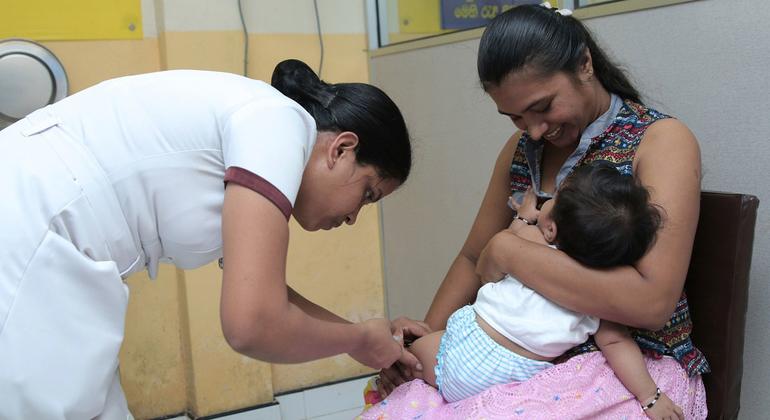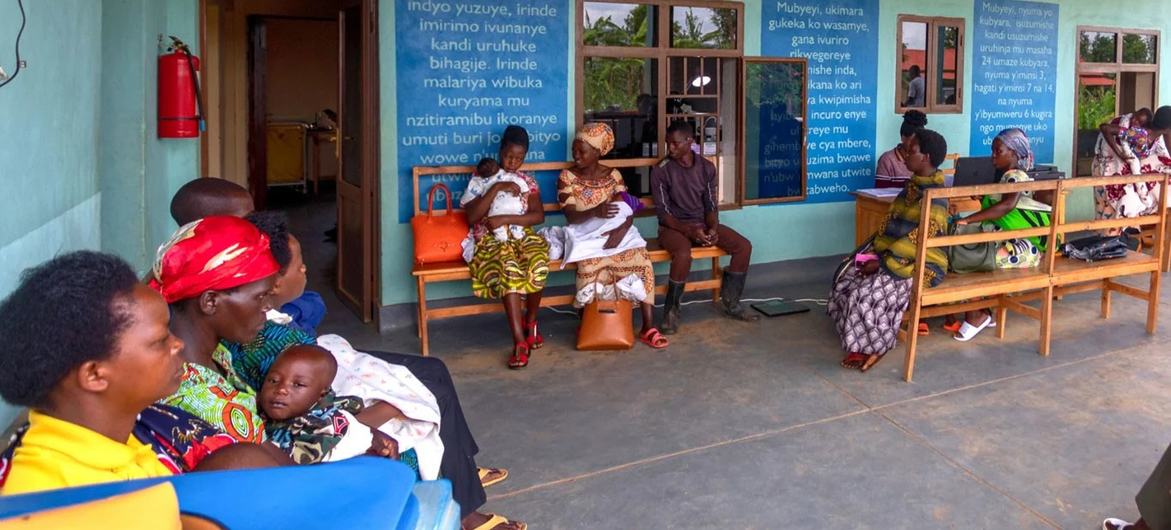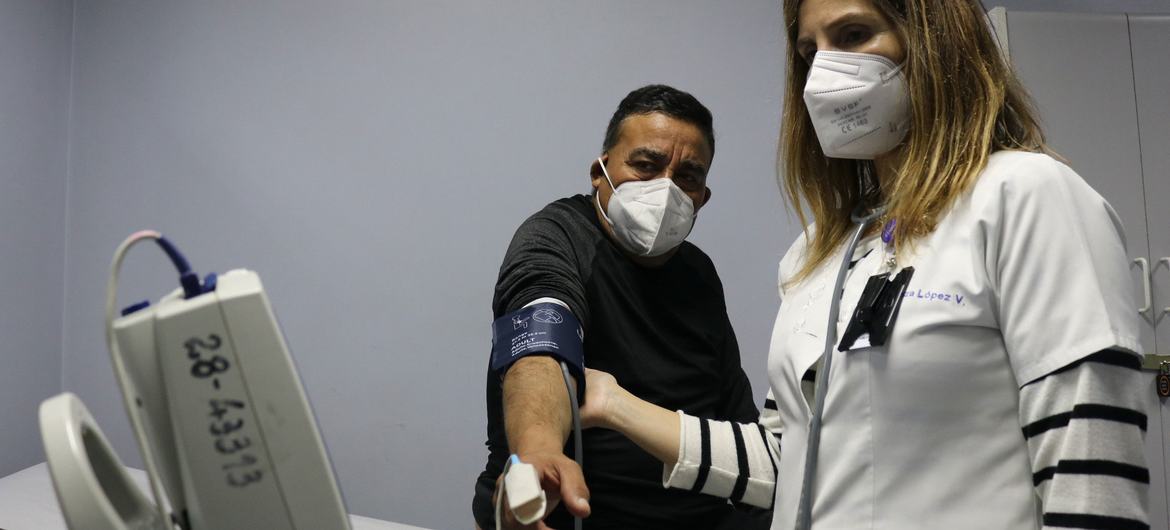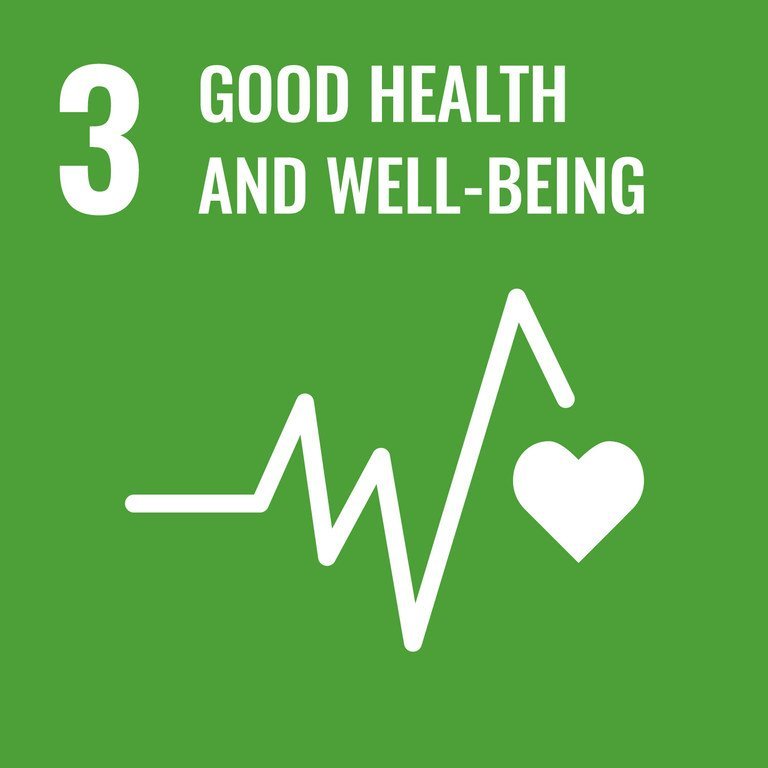WHO Comes in Strong: Hepatitis is Claiming Lives Daily
 The number of lives lost due to viral hepatitis infections is increasing and already accounts for 3,500 deaths daily, according to a report by the World Health Organization (WHO) released on Tuesday.
The number of lives lost due to viral hepatitis infections is increasing and already accounts for 3,500 deaths daily, according to a report by the World Health Organization (WHO) released on Tuesday.
The disease is the second leading infectious cause of death globally, with 1.3 million deaths per year, the same as tuberculosis, another top infectious killer, according to the World Health Organization (WHO) 2024 Global Hepatitis Report.
“This report paints a troubling picture,” said WHO Director-General Tedros Adhanom Ghebreyesus. “Despite progress globally in preventing hepatitis infections, deaths are rising because far too few people with hepatitis are being diagnosed and treated.”
Swift course correction
Even though better tools for diagnosis and treatment are available and product prices are decreasing, testing and treatment coverage rates have stalled, the UN health agency stated in the report, released at the World Hepatitis Summit.
But, reaching the WHO elimination goal by 2030 should still be achievable, if swift action is taken now, the agency said.
“WHO is committed to supporting countries to use all the tools at their disposal – at access prices – to save lives and turn this trend around,” the UN health agency chief said.

© WHO/Isaac Rudakubana
The waiting area at a health clinic in Rwanda. Hepatitis B birth-dose immunization coverage is only 45 per cent globally, with less than 20 per cent coverage in the WHO African region.
Spike in deaths
More than 6,000 people are getting newly infected with viral hepatitis each day, according to the report.
New data from 187 countries show that the estimated number of deaths from viral hepatitis increased from 1.1 million in 2019 to 1.3 million in 2022. Of these, 83 per cent were caused by hepatitis B and 17 per cent by hepatitis C.
Updated WHO estimates indicate that 254 million people live with hepatitis B and 50 million with hepatitis C in 2022. Half the burden of chronic hepatitis B and C infections is among people 30 and 54 years old, with 12 per cent among children. Men account for 58 per cent of all cases.
Gaps in diagnosis and treatment
Across all regions, only 13 per cent of people living with chronic hepatitis B infection had been diagnosed and approximately three per cent, or seven million, had received antiviral therapy at the end of 2022, falling far below global targets to treat 80 per cent of people living with chronic hepatitis B and hepatitis C by 2030.
The burden of viral hepatitis also varies regionally. The WHO African Region bears 63 per cent of new hepatitis B infections, yet despite this burden, only 18 per cent of newborns in the region receive the hepatitis B birth-dose vaccination.
In the western Pacific region, which accounts for 47 per cent of hepatitis B deaths, treatment coverage stands at 23 per cent among people diagnosed, which is far too low to reduce mortality.
In addition, despite the availability of affordable generic viral hepatitis medicines, many countries fail to procure them at these lower prices.

© PAHO
In Chile, new hepatitis treatments mean around 98 per cent of patients recover completely.
Eradicating the epidemic
The WHO report outlines a series of actions to advance a public health approach to viral hepatitis, designed to accelerate progress towards ending the epidemic by 2030.
They include expanding access to testing and diagnostics, strengthening primary care prevention efforts and shifting from policies to implementation for equitable treatment.
But funding remains a challenge, the agency said, with current levels insufficient to meet the needs.
WHO said this arises from a combination of factors, including limited awareness of cost-saving interventions and tools and competing health priorities.
The new report also highlights strategies for countries to address these inequities and access the tools at the most affordable prices available.

United Nations
SDG 3
SDG 3: HEALTHIER GLOBAL POPULATION
- Promote mental health and wellbeing and strengthen the prevention and treatment of substance abuse
- Reduce the number of deaths and illnesses from pollution, contamination and tobacco
- Achieve universal health coverage, and provide access to affordable, essential vaccines and medicines
- Reduce global maternal mortality rate to less than 70 per 100,000 live births and under-five mortality to at least 25 per 1,000 live births
- End epidemics of AIDS, tuberculosis and malaria and combat hepatitis and other communicable diseases
Sustainable development hinges on ensuring healthy lives and promoting wellbeing at all ages.
Lila Montgomery is a celebrated journalist who has a deep commitment to global affairs and humanitarian issues. Her extensive reporting on United Nations initiatives across the globe has brought critical stories to the forefront, stories that affect communities everywhere.




Is there any specific region or population most affected by the increasing deaths due to hepatitis infections?
Yes, the report highlights that the African and Western Pacific regions are disproportionately affected by the rising number of deaths caused by hepatitis infections. The lack of access to diagnosis and treatment in these regions is a major contributing factor to the increasing mortality rate.
It is alarming to see the rise in deaths due to viral hepatitis infections. The report highlights the urgent need for better diagnosis and treatment to prevent further loss of lives. Let’s hope for swift action to achieve the WHO elimination goal by 2030.
Isn’t it concerning that despite the availability of better tools for diagnosis and treatment, the number of deaths due to hepatitis is still on the rise?
It is indeed alarming that despite the existence of improved diagnostic and treatment options, the mortality rate from hepatitis is increasing. Immediate action is crucial to reverse this trend and prevent further loss of lives.
Do we have any statistics on the global vaccination coverage against hepatitis in comparison to other infectious diseases?
Global vaccination coverage against hepatitis remains lower than that for some other infectious diseases. While progress has been made, there is still room for improvement in ensuring access to vaccination services worldwide.
Is there any specific region or regions where viral hepatitis infections are more prevalent, according to the report?
Yes, according to the report by the World Health Organization (WHO), viral hepatitis infections are more prevalent in low- and middle-income countries, particularly in regions with limited access to healthcare services and proper sanitation facilities.
It is concerning to see the rising number of deaths caused by viral hepatitis infections. The lack of diagnosis and treatment for those with hepatitis is truly alarming. Immediate action needs to be taken to prevent more lives from being lost.
It’s devastating to see the increasing number of lives lost to viral hepatitis. We must prioritize better diagnosis and treatment to prevent further deaths. Action needs to be taken swiftly to reach the WHO elimination goal by 2030 and save lives.
Is there any specific region where the increase in hepatitis-related deaths is more pronounced according to this report?
Yes, according to the WHO report, hepatitis-related deaths are more pronounced in low- to middle-income countries, highlighting the urgent need for improved access to diagnosis and treatment in those regions.